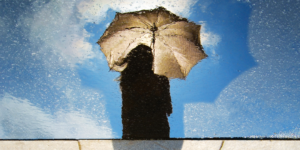The London Building That Bends Light: Exploring the Phenomenon of Sun-Reflecting Architecture
Introduction:
London, a city steeped in history and architectural marvels, has witnessed the rise of a building that caught the world’s attention for an unexpected reason—it reflects the sun so perfectly that it has caused cars to melt. This unique phenomenon has sparked discussions about the intersection of architecture, science, and the environment.
In this article, we will delve into the intriguing story behind this sun-reflecting building, the science behind the phenomenon, and the broader implications it has for sustainable urban development.
An Unintended Spectacle:
In a city renowned for its iconic landmarks, the emergence of a building that has the power to melt cars is a spectacle no one could have anticipated. The phenomenon serves as a reminder of the intricate relationship between architectural design, urban planning, and the natural elements.
The “Walkie Talkie” Building:
London’s Curved Skyscraper: The focal point of this phenomenon is the 20 Fenchurch Street building, popularly known as the “Walkie Talkie” due to its unique shape resembling an old-fashioned mobile phone. Designed by architect Rafael Viñoly, the building’s distinctive curves set the stage for its sun-reflecting capabilities.
The Science of Sunlight Reflection:
A Confluence of Geometry and Glass: The building’s curved design and the choice of reflective materials in its glass façade play a crucial role in the sun-reflecting phenomenon. The curvature of the glass allows sunlight to be concentrated and focused onto specific areas, resulting in significantly higher temperatures than what would be experienced under normal conditions.
The Convergence of Angles:
Creating “Death Ray” Hotspots: The sun-reflecting phenomenon occurs when the sun’s rays hit the curved surface of the building at specific angles, creating “death ray” hotspots on the streets below. These concentrated beams of sunlight can reach temperatures capable of melting plastic and even causing damage to vehicles parked in their path.
The Impact on Urban Environment:
A Cautionary Tale: The sun-reflecting building has shed light on the unintended consequences of architectural design in urban environments. While the phenomenon is an anomaly, it underscores the need for architects and city planners to consider the potential effects of building designs on the surrounding areas, including the impact of concentrated sunlight.
Lessons in Sustainability:
Balancing Aesthetics and Functionality: The sun-reflecting building serves as a lesson in the delicate balance between aesthetic aspirations and practical functionality. As architects push the boundaries of design, it’s crucial to integrate sustainability principles that prioritize the well-being of both the environment and the community.
Mitigating Future Challenges:
Designing with Intention: Architectural mishaps like the sun-reflecting building highlight the importance of designing with intention and foresight. By incorporating shading solutions, utilizing advanced materials, and conducting thorough environmental assessments, architects can proactively address potential challenges and ensure the safety and comfort of inhabitants and surroundings.
Transforming Challenges into Opportunities:
A Greener Future: The sun-reflecting phenomenon also opens up opportunities for innovative solutions that marry architecture and sustainability. Building designs could incorporate advanced materials that absorb or disperse sunlight, minimizing the risk of heat concentration while also contributing to energy efficiency.
Balancing Innovation and Responsibility:
The Way Forward: As the architectural landscape continues to evolve, the story of the sun-reflecting building serves as a reminder that innovation must be accompanied by responsibility. Architects, urban planners, and stakeholders must work collaboratively to create designs that enhance urban aesthetics, cater to community needs, and respect the environment.
Conclusion:
Reflecting on the Lessons of Architecture: The London building that reflects the sun so perfectly it melts cars is more than a curious anomaly—it’s a reflection of the dynamic relationship between architectural design, natural forces, and urban environments. This phenomenon serves as a call to action for architects and city planners to infuse their creativity with foresight, sustainability, and a deep understanding of the impact their creations have on the world around them.
As cities continue to evolve, the sun-reflecting building stands as a testament to the necessity of balance and harmony in creating spaces that not only inspire but also prioritize the well-being of both people and the planet.
For More Related Articles Browse Our Website Blogster.pk
For social Connection You can also Visit and follow our Social media Platforms
Facebook , Instagram, Linkedin, Pinterest, Quora, Twitter, Youtube.







